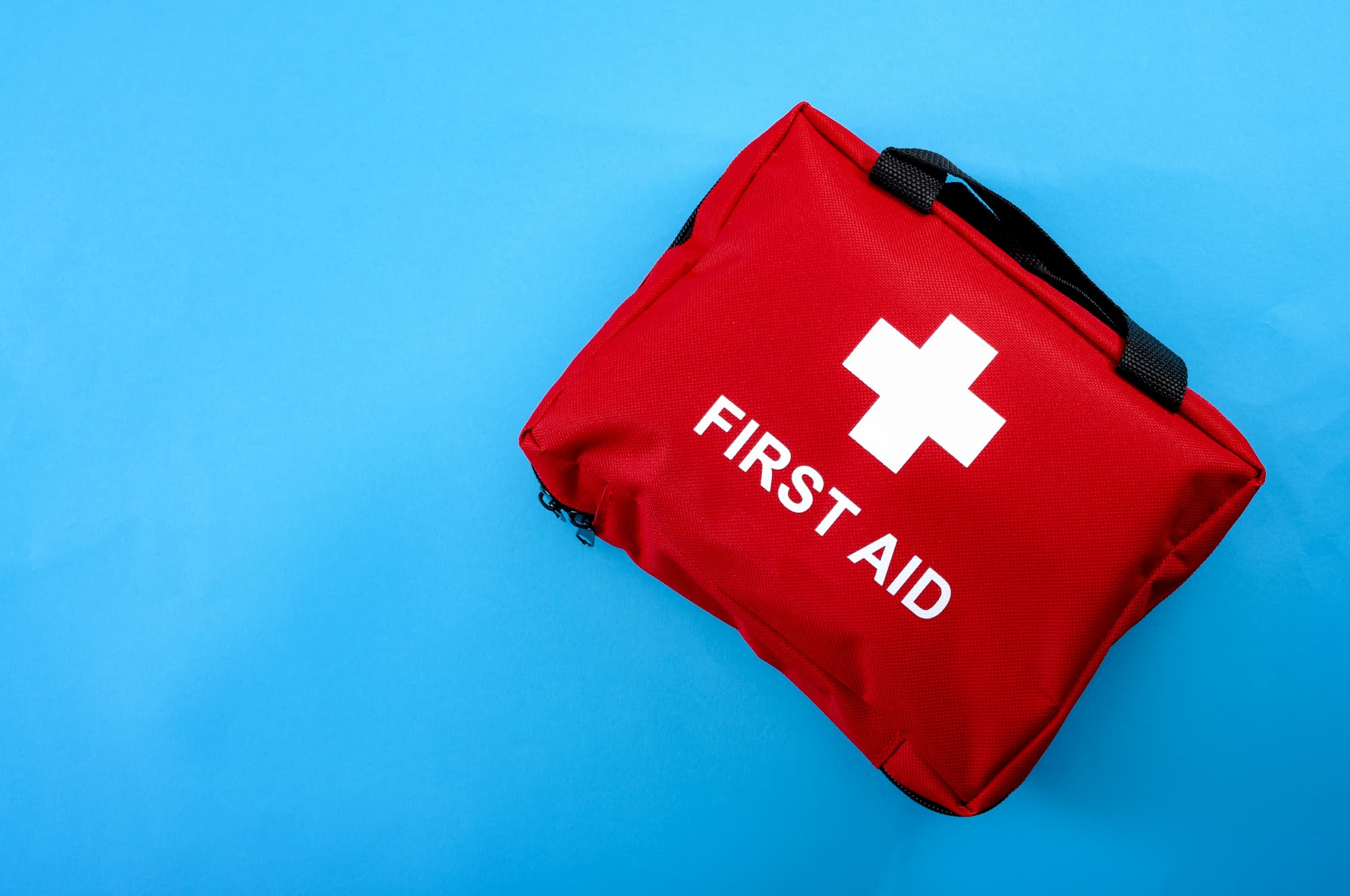What Should Be In A Family First Aid Kit?
It’s important to have a well-stocked first-aid kit in your home so you’re prepared to deal with any minor accidents and injuries. I’m often asked what first aid kits should contain for a growing family. With little people in the house, things like scratches and cut knees can be a regular occurrence. So you need to make sure your first aid kit contains adequate supplies for all ages.
In this article, we will discuss what you use a first aid kit for, what you should have in it, how often you should replace it and more.

What is a first aid kit used for?
A first aid kit allows you to give anyone who needs it emergency medical assistance. It is most commonly used for minor injuries, such as cuts, abrasions and wounds; the kinds of issues that occur regularly and which require immediate attention. There are many potential injuries that can occur around the house or while you are travelling, so you need to be prepared.
Why is it important to have a first aid kit?
It is very important that you have a well-stocked first aid kit to be able to handle any minor accidents and emergencies. Having this will mean that you can react quickly and confidently because you know that you have what you need to hand. It is also important to make sure that you have a well-stocked first aid kit for any trips and holidays that you are taking with your children in case anything happens while you are travelling.
Here is a comprehensive guide to what parents need to take when travelling with children for more information.
What should be in a first aid kit?
The following items should be included in your first aid kit:
- Plasters – Make sure that you have a range of different shapes and sizes.
- Sterile gauze dressings – All sizes of these.
- Sterile eye dressings – At least two of these.
- Bandages – You will need crepe-rolled bandages and triangular bandages.
- Sticky or micropore tape – To help secure bandages.
- A thermometer – A digital thermometer is best.
- Disposable sterile gloves – To ensure that wounds are kept sterile while being dressed.
- Alcohol-free sterile wipes – To clean any wounds.
- Skin rash cream – This can help soothe skin irritated by nettles or ivy, for example.
- Antiseptic cream – To clean wounds or bites.
- Cream or spray for bee stings and insect bites.
- Safety pins – These are to fasten bandages.
- Teething gel – For children who are teething.
- Tweezers – To remove any foreign objects such as splinters or stingers.
- Scissors – To cut bandages and plasters.
- Painkillers – Paracetamol or ibuprofen, infant paracetamol for children, and aspirin for anyone over 16.
- Antihistamine – This is to help with any allergic reactions. Piriton is a good example.
- Distilled water – To help clean wounds.
- Eye bath and eye wash – To clean any dust or foreign objects from the eyes.
Of course, the list of items you can put into your first aid kit is endless. Think carefully about what your family might need. You can purchase first aid kids in various sizes that contain a range of basic essentials in most chemists. You can use these as a starting point and add to them if you need to.
What should not be in a first aid kit?
A first aid kit should contain only items that would be suitable for the people who need it, so any non-emergency tablets or medication should not be in your first aid kit. Any damp or soiled bandages or dressings should not be included, and any water or solution with a broken seal should be removed.
Unless you are heading somewhere where you are going to be a long way away from medical assistance, you should not include antibiotics in your first aid kit because they should only be used when strictly necessary and prescribed by a local doctor. It is also very important that you do not include anything in your first aid kit that is past its use-by date.
How often should first aid kits be checked?
Hopefully, you will not need to use your first aid kit too often. But that’s also why it’s important to review it from time to time to make sure everything is there for when you do need it.
First aid kits and their contents should be checked on a regular basis. This is because the contents may have passed their use-by date, and you need to ensure that you are not giving anyone anything that has expired. Sterile items and medicines, in particular, have a limited shelf life and lose their sterility after a period of time. Although there is no specific time-frame, we recommend checking the contents of your first aid kit every three months. This way, you can rest assured that you have everything that you need in case of any emergencies.
Make a list of anything that’s out of date or missing and replace it. In between each check, keep an eye on what you’re using. Staying on top of your first aid stock will make sure you don’t unexpectedly encounter the dreaded empty box of plasters.
How often should first aid kits be replaced?
You should think about giving your first aid kit a complete restock about once a year to ensure that it has everything that you need. It is always a good idea to replace anything that you have used as soon as possible, and you should keep an eye on how much you have left when it comes to things like plasters, bandages, tubes of creams and antiseptics.
Where should a first aid kit be kept?
There are a lot of items in your first aid kit that could potentially be harmful to your children, so make sure they cannot access it. Lock your first aid kit and keep it out of reach of your children.
To prevent anything from spoiling or getting wet, keep it somewhere cool and dry. It could be a good idea to put it inside a sealable bag to make doubly sure it is not damaged. You can also keep a smaller first aid kit in your car in addition to your household first aid kit, and think about getting a first aid manual to guide you through any emergencies.
First aid training at Childhealthy
Childhealthy offers first aid training for parents to teach you how you can deal with emergency situations effectively and efficiently. You’ll learn about how to deal with everything from choking and shock to burns, bleeding and identifying signs of meningitis. If you have any questions about first aid or if you’d like to learn more about what we do, get in touch. Our specialists can help with vaccinations, check-ups, remote services and more.
Sources:
- CPC Online: First Aid Requirements
- Kids Health: First Aid Kit
- Bespoke Family: First Aid Kit
- Mayo Clinic: First Aid Kits
Disclaimer: Information contained in this article is intended as general advice and does not replace a medical assessment. If you are concerned about your child please contact your doctor for advice.
[DISPLAY_ULTIMATE_SOCIAL_ICONS]Related articles
 March 1, 2021
March 1, 2021
COVID Vaccine Trials For Children
Read more January 28, 2021
January 28, 2021
Tips To Help Children’s Mental Health In Lockdown
Read more December 18, 2020
December 18, 2020
COVID-19 Vaccinations And Children
Read moreBook your appointment
Clinic, remote appointments and home visits are available daily.
We can always find a time to suit you, so please do ask if you are having difficulty finding a suitable time.
Book an appointment